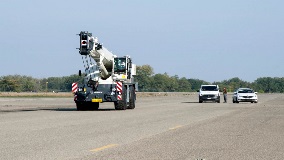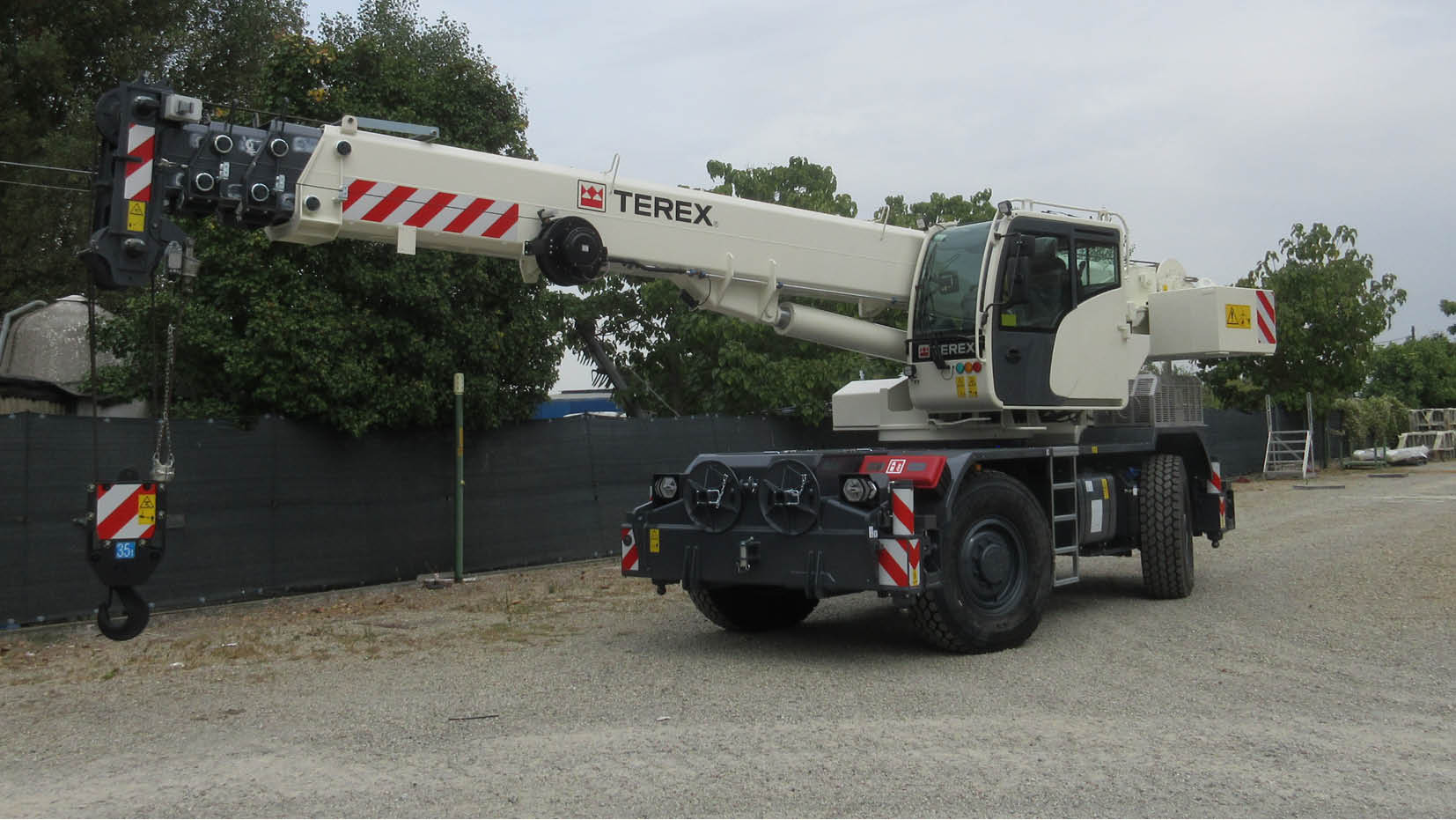Open Discussion on Terex Rough Terrain Cranes

An all-terrain crane can travel on all terrains. Or so its name might suggest. Certainly it can drive itself over public paved roads to a jobsite; and when it is there it can cover most unfinished, soft, muddy raw ground.
A rough terrain, on the other hand, can drive only over rough ground. It is not allowed on roads. It has to be carried to its site on the back of a semi-trailer, which is inefficient and costs time and money and resources; and once it is at the site it has to stay there until it is collected by the semi-trailer again.
 | So why would anyone buy a rough-terrain when an all-terrain is available? “But the names are not accurate. An all-terrain cannot really drive over all terrains. There are many places – rocky slopes, hillsides, deep mud – where it just cannot go and where you need a rough-terrain. And on a large site, the RT can drive anywhere over it, and stay for weeks or months if needed. They are compact, they are versatile, they are manoevrable: with different steering modes and can turn in very small spaces; and since they are very much cheaper to buy that all-terrains they give the customer much greater efficiency and productivity and value for his money.” That is Giancarlo Montanari, who just recently, in October 2021, was appointed business line leader for Rough Terrain operations at Terex, based at their production facility at Crespellano in Northern Italy, in charge of sales and distribution. He did not keep that job long. More recently still, in February this year, a week or two before we spoke, he was promoted to General Manager of the Crespellano business unit. |
“So now I am responsible for the internal side of the Terex RT business as well as the outside, customer-facing work” he says. The appointment clearly shows that Terex sees an awful lot of point in RTs, and a big and continuing future for them: “ My appointment is certainly part of a new corporate strategy from Terex that puts the RT product at the centre, with a completely new focus on the product. And being physically based here at our factory in Crespellano, all the daily activities in the company can be better coordinated and supported. The management of Terex certainly sees a huge potential in the product.”
The reasons for Terex’s faith in the future of RTs are as outlined above: there are tasks which only RTs can do; and there are other tasks that RTs or ATs can do, but the RT can do them better and more economically. “One reason their purchase price is cheaper than ATs is that they are so much simpler” he says. “They do not need to have all the road-drivability elements –,And the inconvenience of needing a separate vehicle to transport them can be minimised: we do that by keeping the overall width of our RTs to less than three metres, which means they can be transported without needing special permits. So the total cost of ownership can be very advantageous. “ATs and RTs are actually very different types of crane, and in the end the markets and the customers for them can be different.” Another part of his job is to expand that market: “WE are trying to get into countries where RTs are not so popular yet. If you look at the southern part of Europe we have a huge market here in Italy but with countries that are very similar, for example Portugal, Spain or Greece, RTs are not so common. So we are thinking of ways to highlight the capabilities of our cranes there, perhaps to show the advantages they have over small city -All-Terrain for example. And I think that is room for us: There are very many things in common between for example Spain and Italy, and we are confident and sure if we can work correctly with a market like Spain or Countries where small-medium all terrain cranes are popular and explain to the customer the benefits that an RT can give, especially in the cost of ownership of the machine, we can certainly enter the market where today the all-terrain is dominating. |  |
“During my six months so far with Terex I have been able to meet distributors and importers and customers; and customers tell me the key thing they look for is performance. The crane must be easy to use, to maximise their productivity. And certainly our RT range with the new Terex operating system TEOS, and with the T-Link telematics platform, ticks all those boxes. They are easy to use because on every crane the operating system is the same, which means that one operator can use the 35 tonne model and then moved to a 90-t version without any extra specific training.
“A trend that we are seeing in the market is a demand for longer booms - but there is still the desire for the crane to remain as compact as possible. Of course you can increase the length of the boom, but remaining compact while you do it is not easy. A longer boom will change the load charts, and need a different design of chassis and superstructure; so this is challenge for the future - one that we will happily face.
 | “The TRT range is our latest; they have all the TEOS, and T-link features we have mentioned and a new ergonomic cab with Also for 2022 we have one of our focuses on South East Asia, |


